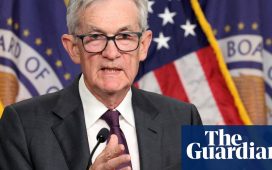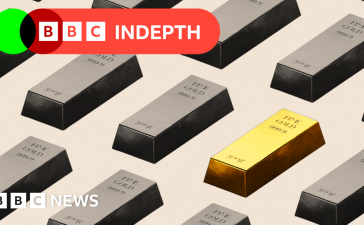A Cuban pilgrim participates in the San Lazaro procession at El Rincon church in Havana, on December 16, 2022.
Yamil Lage | AFP | Getty Images
Accusations of bribery, an imprisoned Cuban bank official and Interpol all feature in a high-stakes case against the Cuban government set to start Monday in the United Kingdom’s High Court.
The legal battle is over a portion of Cuba’s unpaid commercial debt dating back to the 1980s. If Cuba loses, it could ultimately cost the island nation billions in long overdue payments — and, in a worst-case scenario, lead to the seizure of government-owned assets such as oil tankers and in-bound wire transfers.
Investment fund CRF1, originally called the Cuba Recovery Fund, is suing Cuba for roughly $72 million in principal and past due interest on two loans it now owns. They were originally granted to the Caribbean island nation by European commercial banks in the 1980s, and were denominated in German Deutschmarks, a currency that no longer exists.
This is the first time Cuba is facing legal action for what is estimated to be about $7 billion in outstanding commercial loans from the 1970s and 1980s. If CRF wins this case on this small slice of that debt, it could lead to further lawsuits from creditors with claims rising into the billions. Any unpaid judgments could lead to asset seizures.
If they don’t reach a deal, Cuba could then face yet another court fight over whether it finally has to pay. If CRF is successful, it could lead to many other creditors filing suit, with claims rising into the billions.
Cuba would be unable to borrow in the international capital markets until its debts are settled. According to the World Bank, Cuba’s gross domestic product in 2020 was $107 billion, slightly larger than New York City’s budget. The country has managed to survive for decades on the largess of other sympathetic governments: the former Soviet Union, Venezuela and China. But with Venezuela financially strained and China facing a weaker economy, those lifelines look increasingly undependable.
Because of the U.S. embargo against Cuba, American investors are prohibited from owning and trading Cuban debt, which frustrates some frontier-market hedge fund managers in the U.S. They argue that holding Cuban debt would better serve U.S. foreign policy interests because it would give Americans a seat at some future negotiating table.
An old American car passes by the Floridita bar in Havana on December 27, 2022.
Adalberto Roque | AFP | Getty Images
Beyond the commercial debt, there are still nearly 6,000 claims outstanding from Americans and American companies whose properties were confiscated by the Cuban government after former leader Fidel Castro came to power in a coup in 1959.
John Kavulich, the longtime head of the U.S.-Cuba Trade and Economic Council, a private, nonpartisan nonprofit, says the lawsuit “may prove stimulative” to the U.S. and Cuban administrations “to negotiate a settlement for the 5,913 claims valued at $1.9 billion.”
Details of the case
The trial is expected to last eight days. It will feature remote testimony from an imprisoned former employee of the Banco Nacional de Cuba, Raul Eugenio Olivera Lozano.
According to documents filed in the case, Lozano is serving a 13-year prison sentence after he was convicted in Cuba for accepting bribes of more than $25,000 in exchange for processing paperwork that allowed the loans in question to be reassigned to CRF from Chinese-owned ICBC Standard Bank.
In filings with the court, CRF says the bribery claims are “scurrilous” and that Lozano was railroaded by the Cuban government for the purpose of not having to pay back the loans. Human rights organizations have long criticized Cuba for arbitrary detention and lax rule of law. Both Amnesty International and Human Rights Watch describe it as one of the most repressive regimes in the world.
There are other costs to consider, too. Thus far, the Cuban government has spent roughly $3 million on legal fees in its defense, and the plaintiffs have spent about $2.6 million. In the U.K., the loser pays the winner’s legal fees, so one of the parties will be out nearly $6 million.
Cuban officials and their lawyers declined to comment.
Also expected to testify is Jeet Gordhandas. He is a representative of CRF whom the plaintiffs say was prevented from entering Mexico after the Cuban government issued a “Red Notice” through Interpol for his arrest, claiming he initiated the bribe.
Cuban boxers prepare for their fights in the first official women’s boxing program in Cuba at the Giraldo Cordova boxing school in Havana, on December 17, 2022.
Yamil Lage | AFP | Getty Images
In more recent filings, the Cuban government appears to have backed away from the bribery accusation. Instead, it is arguing that the bank executives who facilitated the reassignment of the debt did not have the authority to do so.
Cuba also argues that CRF, which is registered in the Cayman Islands, is a “vulture fund, which invests in distressed Cuban sovereign debt for enforcement purposes.” David Charters, the chairman of CRF, pushed back: “Characterizing us as a vulture fund is a gross misrepresentation of us.”
CRF, meanwhile, says in court filings that it first reached out to Cuba 10 years ago to settle the debt but were ignored. The fund also says it didn’t file suit until it made multiple attempts over the decade to meet with Cuban authorities.
In 2018, CRF says in filings, the fund offered the Cuban government a better deal than the one the country struck in 2015 with bilateral creditors for billions in unpaid debts. Cuba also ignored that overture, according to CRF. Bilateral loans are government-to-government loans.
CRF would rather not go to court, Charters said in an interview, days before the trial.
“We are seeking to engage Cuba even at this late stage. Even today we are ready to talk,” he said. “You make offers, and nothing happens, you are either ignored or rebuffed, so what do you do? It’s been a decade.”
What happens to bad old debt
Defaulted loans trade on the secondary market. There are investors who specialize in buying them at discounts to the loan’s face value and then in negotiating with the government in question to finally settle them. Usually, it’s at a discount to face value and some portion of the past due interest.
Often, the settlement is not in the form of cash, but rather in some other type of long-term financial instrument. One example is a GDP warrant, which pays out based on the growth level of country’s GDP over an extended period.
GDP warrants were used in the Greek debt restructuring in 2012. Sometimes debts are settled via a debt-for-equity swap, in which the creditor receives a concession or ownership of a government-owned property such as an airport or a port, and the creditors receive a share of the revenues generated by the assets.
For decades, Cuban debt has traded around 8 to 10 cents on the dollar, with occasional spikes driven by events such as the death of former Cuban dictator Fidel Castro in 2016 or the temporary thawing of U.S.-Cuba relations under then-President Barack Obama in 2014, in the hopes that a settlement was more likely.
Getting paid on very old, defaulted debt isn’t without precedent. Iraqi debt traded between 8 and 10 cents on the dollar for a decade, and then settled for roughly 32 cents on the dollar after the U.S. invasion in 2003.
Even though Cuba’s defaulted debt is nearly 40 years old, there’s a precedent for bondholders waiting even longer. More than 300,000 holders of czarist-era Russian bonds, which the Bolsheviks defaulted on in 1917 after the revolution, received payment in 2000.
Michelle Caruso-Cabrera, a CNBC contributor, has 30 years of experience at the nexus of finance, economic development, and communication.








